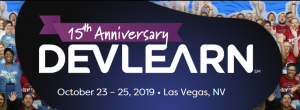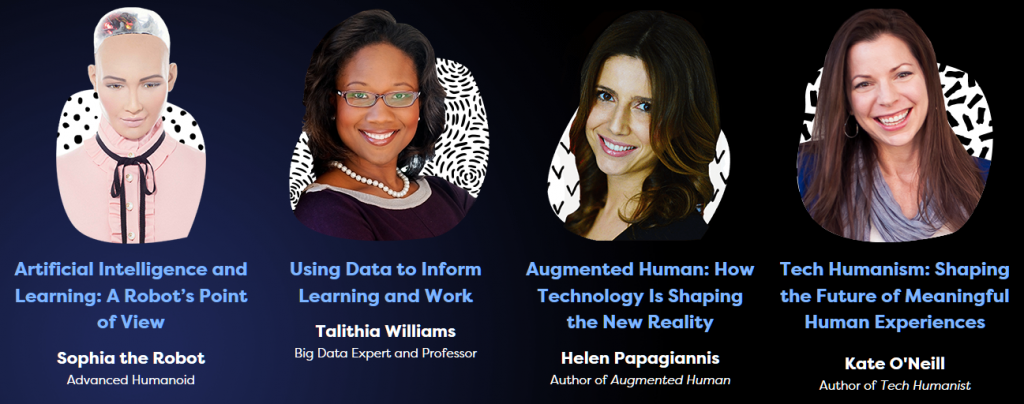David Kelly’s Curated L&D Content for the Week of 6/9/19
 This week’s curated content includes links exploring the following:
This week’s curated content includes links exploring the following:
- How Google Glass has reemerged as a viable enterprise device
- Creativity lessons from your local library
- common mistakes made in user experience design
- A lesson on representation from Sesame Street
- A critical look at trends, using mindfulness as an example
- A look at the current state of consumer AR
Google says the new Google Glass gives workers ‘superpowers’ by Mark Sullivan
Google Glass was looked at as a failure when it was originally released a number of year’s ago, but I never saw it that way. I saw Glass as a very successful experiment, both in terms of exploring the use case of wearable devices, and the social component of how wearing these devices impacted your interactions with people around you. In my experience with the original Glass, this “beta test” (as I saw it) was very successful and lead to the targeted use case for Glass that has emerged today – enterprise applications that are largely supporting work and learning.
21 Libraries That Will Make You Say “Damn, That Is CLEVER” by Stephen LaConte
One of the challenges work can have is allowing what we normally do day-to-day defining what our work is. It’s important to find ways to do things differently. It helps build our creativity, and can also support innovative thinking and better problem-solving. But we have to create the space to do it. This post serves as a nice example of what I mean. We have an accepted expectation of what a library is, and how librarians approach their work. This post looks beyond that standard, highlighting a number of great examples of librarians breaking through the accepted norms and approaching their customers in new and intriguing ways. If you take the time to consider the story behind many of these pictures, you can also see how some of these weren’t just about having fun; they were creative approaches to solving a problem.
8 User Experience Mistakes to Avoid For Product Design by Ana Rios
User experience is something that can often be overlooked in a world where templates are often used as a means of increasing efficiency in elearning development. This post examines a number of important mistakes that can be made when creating a user experience. While the post is referencing product design, all of the tips can be applied to elearning design as well.
Sesame Street Season 47: Meet Julia Clip
Last year the children’s show Sesame Street introduced Julia, a muppet character with autism. More recently the show introduced Julia’s family as characters as well. Videos like this do a great service in spreading understanding and towards normalizing autism in our culture. I think about how much more understanding and empathy children will develop through Julia as a character and it makes me feel hopeful about improving the future quality of life for those with autism. I also share the video here for an important parallel to the world of elearning design: the importance of representation. Do your designs accurately reflect everyone you support? While stock image libraries are improving, it’s important to never lose sight of representation in your design. Videos like this are a great reminder of why this is so important.
The problem with mindfulness via Neuroscience News
This post explores the rapidly growing popularity around the concept of mindfulness, and the growing perceived credibility it has. While the post is interesting on its own, I share this less for its critique of mindfulness and more for the way it critiques it. In short, we sometimes allow an idea to be credentialed by its marketing buzz, and it’s important to look deeper to see if there’s a solid foundation upon which the hype is built. This is true not only for mindfulness, but for any new and emerging trend.
Accelerating AR’s Adoption Cycle by Mike Boland
The use of new technologies often follows the lead of consumer use. We saw it with desktop PCs and smartphones; their use and normalization within L&D in large part followed the use and normalization within everyday life. This is a useful lens through which to assess emerging technologies, and how and when they may emerge as useful tools in L&D. This post examines the current state of consumer augmented reality. It includes not only a great summary of the current state of consumer AR, but also some important lessons that the consumer AR market has learned that will be critical to L&D departments exploring AR.
This is DevLearn
 This year marks the 15th anniversary of DevLearn, the industry-leading conference and expo for learning and technology. DevLearn is where the industry gathers to look at what’s now, what’s new, and what’s next in learning and development. It’s the experience that allows us to advance the work we’re doing—together.
This year marks the 15th anniversary of DevLearn, the industry-leading conference and expo for learning and technology. DevLearn is where the industry gathers to look at what’s now, what’s new, and what’s next in learning and development. It’s the experience that allows us to advance the work we’re doing—together.
The website for this year’s event is now live. Check out the keynote lineup below, and visit the website to learn more about all of the workshops, co-located events, and more taking place at this year’s event.

Leave a Reply